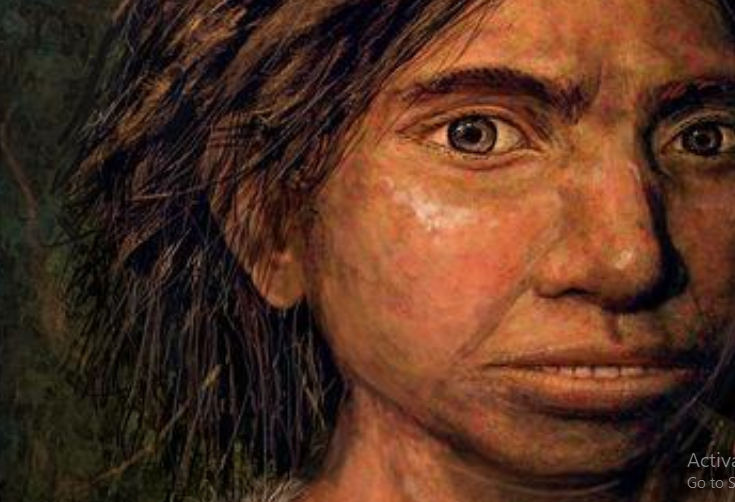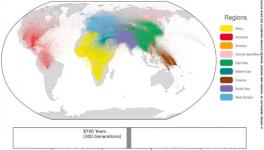Archaic Human Species Denisovans’ Face Recreated Using DNA

Image Courtesy: Science Magazine.
Denisovans existed in the world almost one lakh years ago. They lived alongside the modern humans and the Neanderthals. Both Denisovans and Neanderthals were the early relatives of the modern humans. Discovered just a decade back in a cave in Russia, Denisovans have remained a mystery for the scientists, as no sketch of their physical appearance had been possible till now. But, this will no more be the case. For the first time, a research group from different parts of the world have been able to recreate the face of Denisovans using DNA.
Published in Cell, this research is the first of its type to have recreated the face of Denisovans with the help of the meagre amount of its DNA buried in the limited fossils recovered so far. The recreation suggests that Denisovans had features such as a low brain case, a wide pelvis, large joint surface and ribcage. The jawbone was wider than that of Neanderthals or modern humans, but it protruded as much as in Neanderthals but more than humans. The Denisovan skull was also wider than that of modern humans or Neanderthals.
How was the Denisovan face drawn?
To have the Denisovan face sketched, the scientists resorted to a technique where modification of the DNA can lead to alteration in the level of gene expression. The phenomenon is called DNA methylation, where certain portions of the DNA get attached by methyl groups, especially cytosine, one of the 4 bases that make the backbone of the DNA gets methylated more easily and this phenomenon is widespread. DNA methylation acts like a genetic knob—it can move the expression of certain genes upward or downward.
The modification of gene expression shows up in the physical appearance. For example, the over-expression of certain genes can lead to certain anatomical or physical appearance in a species, whereas under-expression of the same set of genes in the same species could result in the anatomy to appear differently.
The scientists collected DNA from the fossils of the Denisovans, Neanderthals and Chimpanzees. They then mapped the DNA methylation process in all these species, and based on the mapping, they predicted what the face of a Denisovan could look like. With the help of the Human Phenotype Ontology database, they compared the altered DNA and the phenotypes among the related species.
The job of recreating the Denisovan face was not at all a simple task. First of all, fossils of Denisovans are very scarce, so far the confirmed Denisovan fossils are a pinkie bone from the girl plus three teeth, all from Denisova Cave, and a recently identified lower jaw from China's Baishiya Karst Cave. On the other hand, hundreds of fossil remnants including intact skull of Neanderthals have been found in different places of the world. Second, the DNA in the fossils of the Denisovans are also very limited and sequencing them fully as such was not easy. Third, and the most important part is that mere comparison of DNA alteration wouldn’t give an accurate picture of how a Denisovan looked like. The team had to undertake labourious computation in their effort to redraw the face.
Fortunately, their model Denisovan face could have some matches with reality. While their paper was under review, the report of finding a 1,60,000 year old Denisovan jawbone from the Tibetan plateau came in. The team got the opportunity to match their model with the intact jawbone and they found a beautiful match.
“This was very exciting for us. When we submitted the paper to Cell, we only had a few teeth and a finger bone to compare to our predictions. We immediately went to check how it compared to our predictions. And we find a beautiful match, so this was very reassuring for us,” said Liran Carmel of Henrew University, Jerusalem and a corresponding author of the paper.
About 6 lakh years ago, the lineage that gave rise to modern humans, split form the lineage that Denisovans and Neanderthal belonged to. Again about 4 lakh years ago, Denisovans and Neanderthals themselves split into separate branches. Denisovans roamed around Siberia and Southeast Asia until at least 30,000 years ago— perhaps as recently as 15,000 years ago and vanished mysteriously. Denisovans have also been found to interbred with both the Neanderthals and the modern humans. It is due to this interbreeding that the Denisovan genetic imprint still exists among modern humans.
Get the latest reports & analysis with people's perspective on Protests, movements & deep analytical videos, discussions of the current affairs in your Telegram app. Subscribe to NewsClick's Telegram channel & get Real-Time updates on stories, as they get published on our website.
























